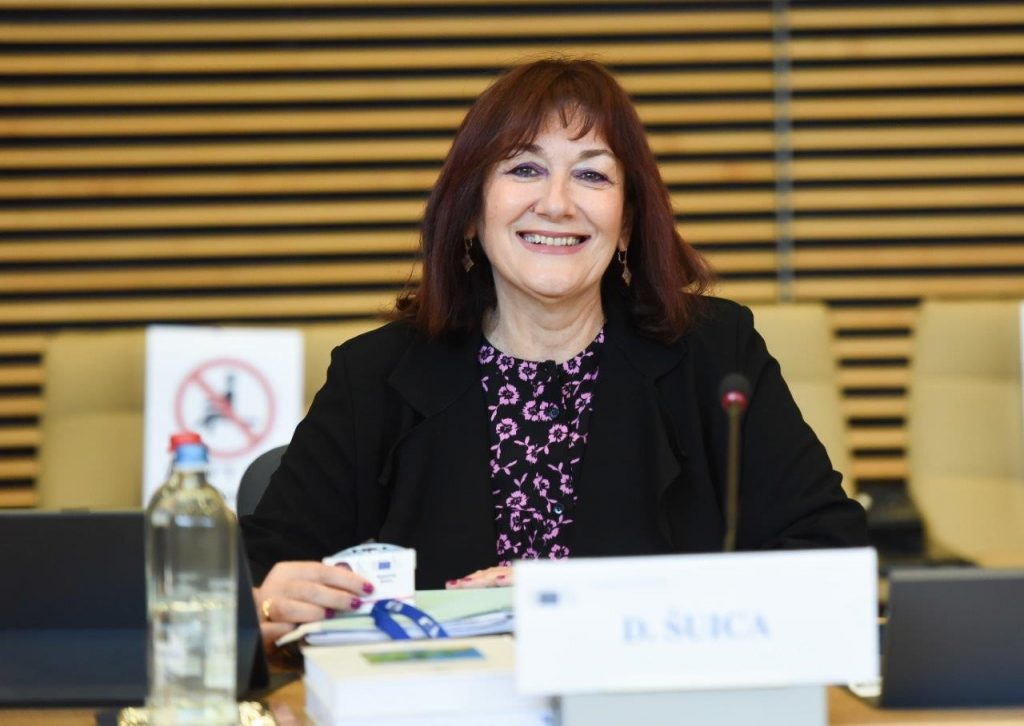The Conference on the Future of Europe is the most ambitious exercise in citizen participation ever undertaken in Europe, organisers say, with results that are expected to lead to concrete measures.
Text: Dietmar Schobel

“The Conference on the Future of Europe is probably the most ambitious exercise in deliberative democracy ever undertaken by the European Union,” says Dubravka Šuica, Vice-President of the European Commission and the former mayor of Dubrovnik. She joins Slovenia’s State Secretary for EU Affairs Gašpar Dovžan and Guy Verhofstadt to serve as one of the three co-chairs of this innovative conference format that aims to foster greater citizen participation in Europe. At the inaugural plenary meeting of the Conference in Strasbourg in June, Guy Verhofstadt, Member of the European Parliament from Belgium, also stressed the importance of the Conference and said that it aims to provide solutions to the major challenges currently facing Europe and Europeans, such as:
“What works well in the European Union, and what needs to change?”
“How is it possible to establish a European Union that is fit for purpose for the coming decades?”
And “How is it possible to create a European Union that is more resilient?”
The Conference has three components
A great deal of work has gone into preparing and developing the Conference on the Future of Europe, and the key results consist of three components. The first is a multilingual digital platform that can be used to submit ideas and proposals, make comments and even organise your own events. The platform features ten predefined debate topics, ranging from “Climate change and the environment” and “Health”, to “European democracy” and “Migration”.
The citizens’ panels represent the diversity of the European Union.
The second component consists of four citizens’ panels, each with 200 participants who are randomly selected to represent the diversity of the European Union according to geographic origin, gender, age, socioeconomic background and level of education. The panels will include at least one female and one male citizen from each Member State. Young people, meaning anyone between the ages of 16 and 25, will make up one-third of each panel.
Citizens and EU politicians working together
The Conference Plenaries are the third component, where 108 European citizens (80 from the European citizens’ panels, 27 from national citizens’ panels or Conference events, plus the President of the European Youth Forum) will be joined by 108 representatives from the European Parliament, 54 from the Council and three from the European Commission. The first sessions of the citizens’ panels were already held in mid-September. The final report, which will summarise the results of all events and input from citizens and elected representatives, is due to be completed in May 2022.
The results are to be implemented
All three main EU institutions – the European Parliament, the Council and the Commission – are involved in organising the Conference on the Future of Europe and have formally committed to following up on its results. It remains to be seen what this will mean in concrete terms and what input will be provided by the general public. But according to the organisers, anything is possible – from addressing the practical implementation of European projects and programmes, to changing EU laws and amending the European Treaties. Indeed, many people have high expectations of the Conference on the Future of Europe. “We hope to rebuild trust with our citizens, restore and strengthen faith in the European project and create a new vision for Europe that we all can share,” says Dubravka Šuica.
